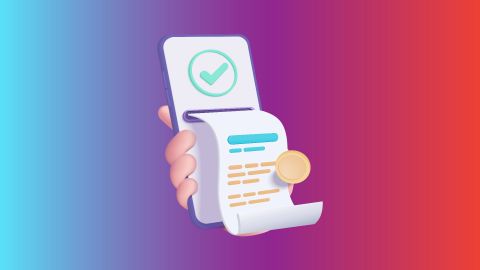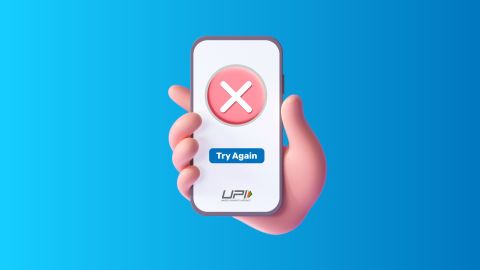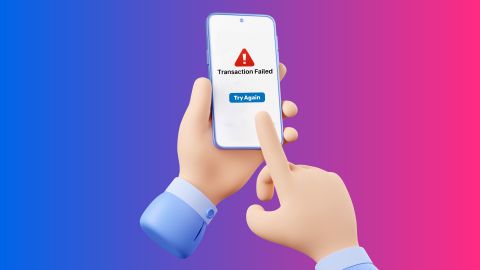Virtual power plants offer a new way to manage energy. Learn about their key components, challenges, and examples of successful global projects that are shaping the future of energy production and consumption.
What is a Virtual Power Plant?
-
-
A Virtual Power Plant (VPP) is a network of decentralized, small-scale power generating units, such as solar panels, wind turbines, battery storage systems, and flexible power consumers. These units are managed through a central control system to aggregate their energy production and consumption. The goal of a VPP is to provide reliable and stable power to the grid while optimizing the efficiency of renewable energy resources and minimizing the reliance on conventional power plants.
Consider Bajaj Finserv for electricity bill payments
Bajaj Finserv offers a convenient platform for making electricity bill payments through Bajaj Pay. This platform lets you pay your bills securely using cards, UPI, or wallets. For seamless transactions and to stay updated on your payments, consider using Bajaj Pay for your electricity bill payments.Key components of Virtual Power Plant
Virtual Power Plants are composed of several key components:
1. Distributed Energy Resources (DERs): These include renewable energy sources like solar panels, wind turbines, and energy storage systems.
2. Energy Management Systems (EMS): A central system that coordinates and optimizes the operations of all connected DERs to ensure stable energy production and consumption.
3. Communication networks: These ensure real-time data transfer and control of the distributed units.
4. Grid integration: Virtual power plants are integrated into the energy grid to manage energy distribution efficiently.How Virtual Power Plants work
Here’s a simplified overview:
1. Aggregation of resources: The VPP collects energy from various sources like solar, wind, and battery systems, as well as demand response programs from consumers.
2. Data monitoring: Energy generation and consumption data are constantly monitored to optimize performance.
3. Grid connection: The aggregated power is fed into the main grid or used for local consumption, balancing supply and demand.
4. Dispatchability: The VPP operator can dispatch energy from the distributed units to meet peak demand or provide services to the grid when necessary.Advantages of Virtual Power Plants
- Increased renewable integration: VPPs help integrate more renewable energy sources into the grid, enhancing sustainability.
- Grid stability: They provide support during peak demand times or when traditional power sources are unavailable.
- Cost-efficiency: By optimizing the use of decentralized resources, VPPs reduce the need for costly infrastructure investments.
- Flexibility and scalability: Virtual power plants can easily expand by adding more units to the network.
- Energy security: They improve energy security by relying on multiple small-scale energy sources rather than centralized systems.
Challenges and limitations of Virtual Power Plants
- Interoperability: Different devices and systems may not always be compatible, which could complicate the integration of DERs.
- Data privacy and security: Handling large amounts of real-time data from numerous units raises concerns about data protection.
- Regulatory challenges: In many regions, regulations for energy markets may not yet be fully adapted to accommodate VPPs.
- High initial investment: Setting up and maintaining a VPP may require significant upfront costs in infrastructure and technology.
- Grid reliability: Managing a large number of small-scale resources can create challenges in maintaining consistent and reliable power supply.
Examples of successful Virtual Power Plants worldwide
Location VPP Type Key Features Germany Solar and Wind VPP Aggregates renewable sources for grid stability and balancing supply-demand Australia Battery Storage VPP Aggregates household battery systems to provide grid services United States Hybrid VPP (Solar + Storage) Combines solar, wind, and storage to offer dispatchable energy services How Virtual Power Plants impact the grid
Virtual Power Plants contribute to grid stability by providing flexible, reliable energy that can be dispatched when demand is high or during system disturbances. VPPs help balance intermittent renewable energy sources like wind and solar by integrating storage solutions. By acting as a distributed resource, VPPs support grid operators in managing supply-demand fluctuations without relying heavily on traditional, fossil-fuel-powered plants.The future of Virtual Power Plants
As renewable energy adoption increases, Virtual Power Plants will become more critical in modern energy systems. The future of VPPs involves further advancements in automation, artificial intelligence, and data analytics to enhance their efficiency. With increasing integration of smart grids and energy storage solutions, VPPs could provide a more resilient, sustainable, and cost-effective approach to energy distribution. Additionally, regulatory frameworks and technological innovations will continue to shape the growth and scalability of VPPs.How to participate in Virtual Power Plant programs
Consumers can participate in Virtual Power Plant programs by installing renewable energy systems like solar panels or battery storage units and enrolling them in VPP schemes. Utility providers or energy service companies typically offer such programs. Participants can earn incentives or rebates in exchange for providing energy flexibility or allowing their systems to be controlled remotely during peak demand periods.Government and regulatory policies
Governments around the world are beginning to recognize the importance of VPPs in achieving energy transition goals. Policies that support decentralized energy generation, grid modernization, and demand response programs are essential for the growth of VPPs. Regulatory bodies are working to create frameworks that enable seamless integration of VPPs into existing energy markets while ensuring fair compensation for participants.Technological innovations driving Virtual Power Plants
Technological advancements in IoT (Internet of Things), AI (Artificial Intelligence), and smart grid systems are revolutionizing the functioning of VPPs. IoT allows real-time monitoring and control of distributed resources, while AI optimizes energy production and consumption patterns. Moreover, innovations in battery storage systems and power electronics enhance the flexibility and efficiency of VPPs.Importance of electricity payment online
Paying electricity bills online saves time and effort. Platforms like Bajaj Pay offer unmatched convenience:- Instant payments: No delays or long queues.
- Wide accessibility: Pay anytime, anywhere.
- Safe transactions: High-end encryption ensures secure payments. By choosing Bajaj Pay, you support sustainability through efficient energy management.
-
Recharge and Pay Bills
Mobile Prepaid
Mobile Postpaid
Broadband Bill Payment
Electricity Bill Payment
Bajaj Finserv App for All Your Financial Needs and Goals
Trusted by 50 million+ customers in India, Bajaj Finserv App is a one-stop solution for all your financial needs and goals.
You can use the Bajaj Finserv App to:
You can use the Bajaj Finserv App to:
- Apply for loans online, such as Instant Personal Loan, Home Loan, Business Loan, Gold Loan, and more.
- Explore and apply for co-branded credit cards online.
- Invest in fixed deposits and mutual funds on the app.
- Choose from multiple insurance for your health, motor and even pocket insurance, from various insurance providers.
- Pay and manage your bills and recharges using the BBPS platform. Use Bajaj Pay and Bajaj Wallet for quick and simple money transfers and transactions.
- Apply for Insta EMI Card and get a pre-approved limit on the app. Explore over 1 million products on the app that can be purchased from a partner store on Easy EMIs.
- Shop from over 100+ brand partners that offer a diverse range of products and services.
- Use specialised tools like EMI calculators, SIP Calculators
- Check your credit score, download loan statements and even get quick customer support—all on the app.
Frequently asked questions
What are virtual power plants and how do they work?
A Virtual Power Plant (VPP) is a network of decentralized, small-scale energy generation and storage units like solar panels, wind turbines, and batteries. These resources are connected and managed through a central control system, allowing them to work together as a single, integrated unit. VPPs help balance supply and demand by dispatching power to the grid during peak periods or when traditional power plants are unavailable.
What are the key benefits of virtual power plants for consumers?
Cost Savings: By participating in VPP programs, consumers can earn rewards or lower energy bills for providing energy flexibility.
Increased Energy Security: VPPs improve grid reliability by using a network of distributed energy sources.
Sustainability: They help integrate renewable energy into the grid, promoting cleaner energy use.
Greater Control: Consumers can actively participate in energy management by using and controlling their energy resources more effectively.
Increased Energy Security: VPPs improve grid reliability by using a network of distributed energy sources.
Sustainability: They help integrate renewable energy into the grid, promoting cleaner energy use.
Greater Control: Consumers can actively participate in energy management by using and controlling their energy resources more effectively.
How can homeowners participate in a virtual power plant program?
Homeowners can participate in VPP programs by installing renewable energy systems (e.g., solar panels, battery storage) and enrolling their units in a VPP program offered by utility providers or third-party energy service companies. These programs often provide incentives or rebates for energy flexibility, allowing participants to help balance grid demand.
What are the challenges associated with virtual power plants?
Technology Integration: VPPs require seamless integration of diverse energy sources and systems, which can be challenging due to compatibility issues.
Regulatory Hurdles: The lack of standardized regulations for decentralized energy systems can complicate the deployment of VPPs.
Data Security: Handling large amounts of real-time data across distributed units raises concerns about cybersecurity and privacy.
Regulatory Hurdles: The lack of standardized regulations for decentralized energy systems can complicate the deployment of VPPs.
Data Security: Handling large amounts of real-time data across distributed units raises concerns about cybersecurity and privacy.
How do virtual power plants benefit the energy grid?
VPPs contribute to grid stability by providing dispatchable power during peak demand or times when renewable energy generation is low. They help balance supply and demand, reducing the need for traditional power plants, and can even offer ancillary services like frequency regulation to maintain grid reliability.
Show More
Show Less




